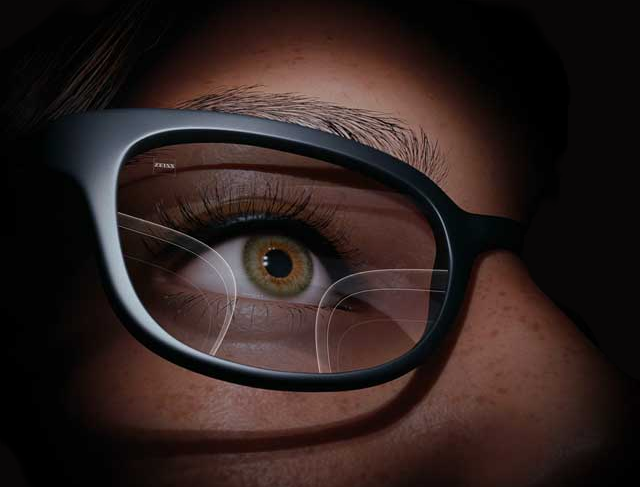Product of the Day
CES 2024: Zeiss sheds light on Smart Glass holograms
Multifunctional Smart Glass allows for a wide range of innovative applications of holograms, from the home to outer space.
“Optical activation of transparent media” sounds highly technical, but in the hands of legendary optics company Zeiss transforms the ability to display images and information.
At CES 2024 in Las Vegas this week, it is presenting its Multifunctional Smart Glass technology, which combines projection, detection, illumination and filtering. This opens up new holographic possibilities, from smart home solutions to augmented reality head-up displays.
The European Space Agency and NASA have used the technology on space missions for many years, and it is well-established in the semiconductor and medical technology sectors. At CES, the focus is on industrial solutions with equipment and processes for mass production, but suitable for everyday use for more safety, interactivity, efficiency and comfort.
Zeiss provided the following information on its Multifunctional Smart Glass capabilities:
Replication technology enables industrial-scale hologram production for the first time
At the heart of the Zeiss technology is a thin, transparent layer to which ultra-high-precision optics are attached in the smallest of spaces. It is characterised by transparency of over 92 percent combined with maximum clarity. It makes it possible for holographic technology to be used in applications where limitations of installation space, weight and costs previously stood in the way. The holographic functionality can turn any glass surface (windows of buildings, transparent screens, side windows of vehicles) into an on-demand screen for communications.
In the past, holograms were limited to small production runs. With the replication technology developed in the Zeiss laboratories, the fully automated duplication of a master hologram in large quantities is now possible for the first time. Roman Kleindienst, Vice President Zeiss Micro optics: “This technological milestone for holography can be compared to what the invention of letterpress printing meant for writing. That’s why we call it the ‘Gutenberg moment’ for holography.”
Holography in the car: clear benefits for safety and comfort
Augmented Reality HUDs have many advantages in cars: Drivers obtain all of the input they need without taking their eyes off the road. The selected information that they want or need appears within their field of vision. Other benefits are the simple functionality and additional comfort: Holographic 3D content permits more design, branding, guidance and information functions. For example, side and rear windows can be used for eye-catching Car2X communications. It is also possible to black out window glass or make projected text and images visible only from the inside or outside. Video content is also supported. As a holographic lighting system – on brake lights of cars or two-wheeled vehicles – the Zeiss Multifunctional Smart Glass technology, with its 3D imaging, opens up new levels of design freedom for light signatures.
Floating switches in vehicle cockpits or smart homes
A remarkable example of the new design possibilities presented by Zeiss Multifunctional Smart Glass can be seen in floating switches. These are holographic, 3D human-machine interfaces based on the unique transparent layer from Zeiss. They allow 3D control elements to be displayed on demand as holographics – in other words, light projections – in the form of switches or controls on clean black-panel surfaces. They are activated by voice or gesture control only when needed. This gives a clean, contemporary look to vehicle interiors or the controls of smart household appliances.
Transparent camera
Zeiss Multifunctional Smart Glass technology permits the integration of a transparent camera – a “holocam” – that uses coupling, decoupling and light guiding elements to divert incident light to a concealed sensor. This eliminates the need for cutouts or installation space in visible areas for cameras or sensors in the exterior for following distance alerts or parking sensors or in the interior for fatigue detection systems.
The Zeiss technology also delivers significant added value for entertainment electronics products such as screens and displays that have integrated cameras. For example, the placement of the holocam at the center of the screen will allow participants in videoconferences to make eye contact. The transparency of the holographic layer has only a minimal effect on the brilliance of the image reproduction.
It is also possible to detect spectral components as additional information to complement the visible image. The resulting data provide insights into environmental contamination such as air pollution and UV exposure.
Interior lighting plus energy generation
Other applications of Zeiss Multifunctional Smart Glass technology can be found especially in the smart home. For example, innovative interior lighting can be realized through special holographic decoupling elements in exterior glass that is almost indistinguishable from natural light. Windowpanes can be illuminated evenly over wide areas – with adjustable lighting moods to complement existing smart home solutions.
Glass surfaces can also generate energy. The microoptical layer in the windowpane absorbs incident sunlight and transmits it in concentrated form to a solar cell. This combines the advantages of conventional windows – natural light and an unrestricted view – with the additional benefit of efficient energy production.
As a result, the innovative Zeiss technology will make surfaces available for power generation in the future that could not previously serve that purpose: office building facades and windows of high-rise apartment buildings and other residential housing. This creates new opportunities to capture energy anywhere that glass panels are used.
System technology provider instead of hardware producer
The innovative Zeiss technology has the potential to completely rethink parts and components in terms of design and function in many application fields. As a system provider, Zeiss does not wish to produce the components itself. Instead it will provide the industrial-scale replication of holograms in the form of a transparent layer to manufacturers or suppliers who wish to enhance their products and provide them with new functions. For this purpose, Zeiss is creating an entire ecosystem: from the first step through to the finished hardware, along with unrivalled advisory services and design support.

















